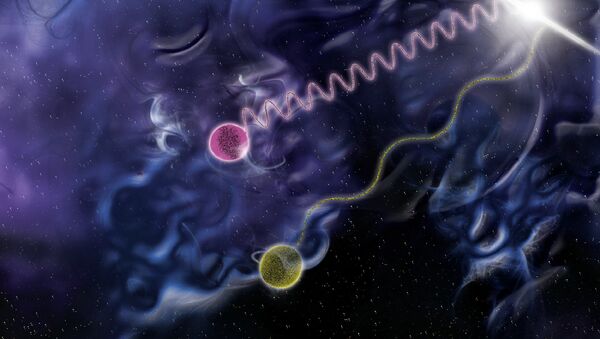A collaborative team of theoretical physicists from the National Institute of Standards and Technology (NIST) are attempting to build objects on a subatomic scale out of photons, a project based on the premise that these particles of light could form their own kind of massless molecule.
New discoveries compound prior research from collaborators at Harvard, Caltech and MIT: in 2013, scientists found a way to join two photons so they would sit on top of one another. The experiment was considered revolutionary, as nobody until then had ever been able to bind single photons.
Some, perhaps getting ahead of themselves, started preparing for the imminent arrival of Star Wars-esque lightsabers.
In a forthcoming paper in the Physical Review Letters, NIST physicists and collaborators show — in theory — that by altering a few parameters in the process of binding, photons can travel together, arm in arm, at a set distance from one another. In theory, it is not dissimilar to the structure of any other atomic particle.
“It’s not a molecule per se, but you can imagine it as having a similar kind of structure,” NIST’s Alexey Gorshkov said. “We’re learning how to build complex states of light that, in turn, can be built into more complex objects.”
Constructing objects on a human scale — like a lightsaber — out of photons appears to be a far-off reality at this time. The process of binding photons requires specialized knowledge, equipment and laboratory conditions that are so hard to replicate that just getting a few individual subatomic particles together is quite the task. In the meantime, though, molecular light could find a home in other applications.
“Lots of modern technologies are based on light, from communication technology to high-definition imaging,” said Gorshkov. “Many of them would be greatly improved if we could engineer interactions between photons.”
The discoveries could simplify the creation of something called the “standard candle,” Gorshkov added, referring to a device that shines a set number of photons at a receiver or detector. Photonic binding could also have more immediate applications in computers’ CPU processors. Such an advancement would mean a revolution in computing that could dramatically cut the use of electricity in the conversion of light particles in fiber-optic cables to electrons.
“They’re massless and fly at the speed of light,” Gorshkov said. “Slowing them down and binding them may show us other things we didn’t know about them before.”
Indeed, an illuminating discovery such as this can only mean more discoveries and advancements to come.


